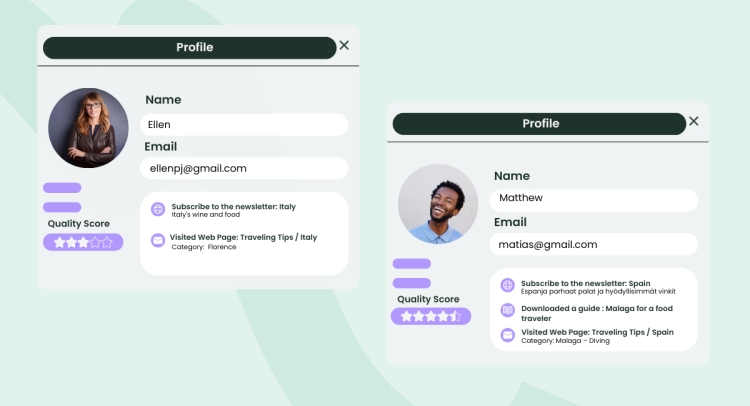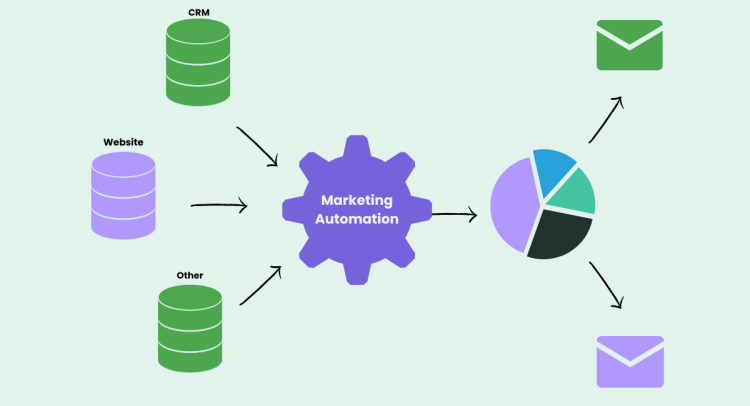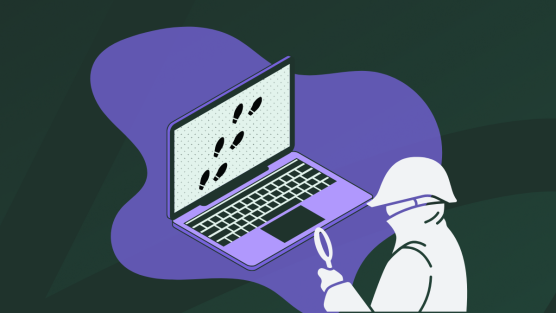Marketing automation plays a significant role when you’re guiding customers towards a purchase. But how can it help you transform an anonymous website visitor into a customer? At what point does the tool come into the picture, and how can it be used to identify website visitors?
In this part of series, we will explore the automations related to identifying website visitors. If you missed the first part, you can find it here.
Once upon a time, there was a potential customer…
...whose interest towards a company sparked. This potential customer might have seen the company's advertisement, clicked on it, or found the company through a Google search. Therefore, this anonymous and potential future customer arrived on the company's website, browsed through pages, watched a video, and read a blog post.
At this stage, from the company's perspective, they are just a number in website analytics. We know which browser they are using and how they arrived at the site. We know what they did on the website and what device they are using. However, we don't know who they are.

With a marketing automation system, it is possible to identify an unknown website visitor.
After spending some time exploring, the customer leaves the website. They may purchase later on, either from the company or from their competitor. And that's the end of it. We may never hear from this potential customer again, or if we do, we may not be able to link them to that random website visitor. The question is, how to implement marketing automation to avoid this kind of unawareness in the future.
Meanwhile, elsewhere...
...a potential customer arrives at a website. Behind this website, there is a marketing automation system working and it’s ready to react as soon as the person is identified.
As a pleasant surprise to the visitor, there is a new guide on the website about a topic that interests them. When they start to download the guide, they notice that providing their contact information is required. After a moment of consideration, they find the trade-off worthwhile. By leaving their contact information, they transform from an anonymous website visitor to a named potential customer. They now have their own profile, which accumulates information from sources such as newsletters, social media, online store, or CRM system. This profile helps to build a picture of the customer and their needs, enabling the delivery of more tailored information.

At the same time, the downloaded guide appears in their email inbox. When they leave the website, a remarketing campaign is activated. Over the next week, the company's name becomes ingrained in their memory as ads offer them products they have expressed interest in. Two weeks later, the company comes to the potential customers' minds again when they receive a special offer via email. Unlike the customer in the first story, they are more likely to remain engaged.
Identifying the customer is one of the most critical stages of marketing automation. How can we encourage customers to identify themselves? By simply offering something interesting that brings value to them. This can be information, entertainment, offers, a sense of community, or the opportunity for self-expression.
Here are some examples of what you can offer:
- Newsletter
- Opportunity to participate in an event or training
- Contest
- High-quality whitepaper or guide
- Opportunity to test new products
- Free WiFi
- Opportunity to participate in product development and ideation
- Trial of a demo
- Discount coupon
- Opportunity to be among the first to receive a product
- Automated notification of product availability
- Opportunity to read and write product reviews
- Membership in a customer loyalty club
- Membership in an engaging online community.
For example, try these:
- Filling out a contact form
- Clicking on links in a B2B newsletter received through the registry
- Making a purchase or reservation from the online store
- Abandoned online shopping cart reminder (when contact information has already been filled out)
- Sharing company-related content on social media.
The customer has been identified – how to implement marketing automation now?
When planning automations, it is important to consider the different ways in which a customer makes initial contact with the company and how to assist and move the customer forward in this situation. The most important thing is that something happens.
Often, it's about everyday insights. How to implement marketing automation when a customer submits a contact request on a Saturday evening? Don't miss the opportunity to capitalize on the customer's moment of interest just because it's outside office hours. Instead, send additional information as an automated message that the customer can immediately explore. Did the customer subscribe to the newsletter? You can welcome the subscriber and provide information about offers.
When designing automations, feel free to experiment and use creativity – you know your customers best. It's important to quickly reach the implementation level and test them in practice. This way, you can also see what works and gather additional information about customers.
What's next?
Once you have gained an understanding of how the tool can be used for customer identification, the possibilities are limitless. After the first two parts of our article series, you have now mastered automations related to customer identification and basic messages. Next, we will continue our article series by exploring drip campaigns, which involve automating multiple marketing messages into chains. Stay tuned to learn how to implement marketing automation in your organization's overall operations.
Would you like to try the tool in practice?
Request a demo of our agile LianaAutomation tool! We will tell you which automations work for your organization and how to get started with them. Also, explore marketing automation in more detail through the guides we have compiled.



